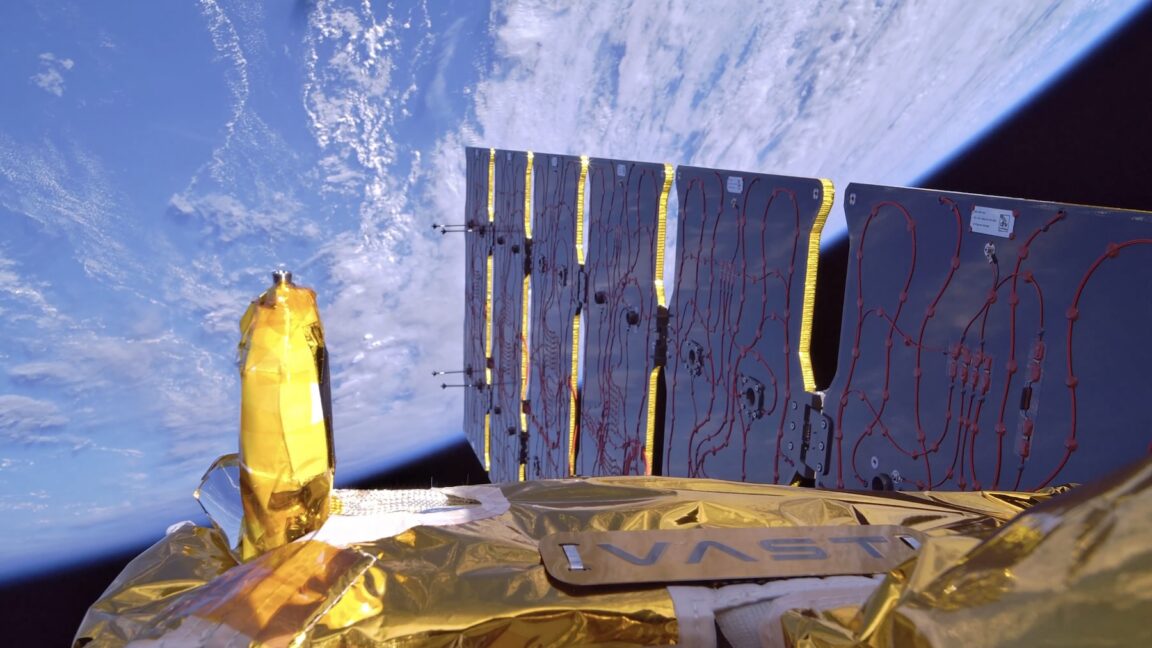Copyright Ars Technica

A pathfinder mission for Vast’s privately owned space station launched into orbit Sunday and promptly extended its solar panel, kicking off a shakedown cruise to prove the company’s designs can meet the demands of spaceflight. Vast’s Haven Demo mission lifted off just after midnight Sunday from Cape Canaveral Space Force Station, Florida, and rode a SpaceX Falcon 9 rocket into orbit. Haven Demo was one of 18 satellites sharing a ride on SpaceX’s Bandwagon 4 mission, launching alongside a South Korean spy satellite and a small testbed for Starcloud, a startup working with Nvidia to build an orbital data center. After release from the Falcon 9, the half-ton Haven Demo spacecraft stabilized itself and extended its power-generating solar array. The satellite captured 4K video of the solar array deployment, and Vast shared the beauty shot on social media. “What a launch night and team at Vast!” the company’s CEO, Max Haot, posted on X. “And thanks for the ride, SpaceX. Haven Demo’s mission success has turned us into a proven spacecraft company. The next step will be to become an actual commercial space station company next year. Something no one has achieved yet.” Vast, backed by crypto billionaire Jed McCaleb, is one of several companies vying for a NASA contract to deploy a commercial outpost in low-Earth orbit. Unlike its competitors, Vast is taking an iterative approach with flight demonstrations for its private space station program. First, there’s Haven Demo, now in space. That will be followed by a single-module human-rated habitat called Haven-1, and finally a multi-module space station complex named Haven-2. Dual paths Vast says Haven-1 is scheduled for launch next year on a SpaceX Falcon 9. The company has manufactured Haven-1’s primary structure, a single module including its hatch and domed window. The structure completed pressure and load acceptance testing in Mojave, California, last month, and will undergo final weld inspections and integration in Vast’s clean room in Long Beach. The integration tasks still include installing Haven-1’s environmental control and life support elements, power, data, and thermal control systems, thrusters, fuel tanks, and internal crew accommodations. While that work continues on Earth, Vast’s demo mission will validate some of the company’s designs in space. Flying at an altitude of 300 miles (500 kilometers), Haven Demo will test Vast’s computer, power, software, guidance and control, propulsion, and radio systems. The pathfinder will also provide Vast an opportunity to exercise its ground stations and mission control teams. Meanwhile, Vast will ship Haven-1 from its California headquarters to NASA’s Neil Armstrong Test Facility in Ohio for a rigorous environmental test campaign. The Haven-1 module, roughly 33 feet (10.1 meters) long and 14 feet (4.4 meters) wide, will undergo acoustics, vibration, and electromagnetic interference testing. Engineers will also place the habitat into a test chamber to check its performance in the extreme temperatures and airless vacuum environment of low-Earth orbit. Then, Haven-1 will ship to Cape Canaveral, Florida, for final launch preparations. Vast’s official schedule calls for a launch of Haven-1 no earlier than May 2026, but there’s still a lot to do before the spacecraft is ready to travel to the launch site. Once in orbit, Haven-1 will host a series of crew visits flying on SpaceX’s Dragon spacecraft, each staying for two weeks before returning to Earth. Haven-1 has a habitable volume of about 1,600 cubic feet (45 cubic meters), somewhat smaller than one of the primary modules on the International Space Station, but five times more than SpaceX’s Dragon capsule. Vast’s longer-term roadmap includes a larger multi-module space station called Haven-2 to support larger crews and longer expeditions in the 2030s. Vast’s demo mission is an initial step toward these goals. The satellite now circling the planet carries several systems that are “architecturally similar” to Haven-1, according to Vast. For example, Haven-1 will have 12 solar arrays, each identical to the single array on Haven Demo. The pathfinder mission uses a subset of Haven-1’s propulsion system, but with identical thrusters, valves, and tanks.



